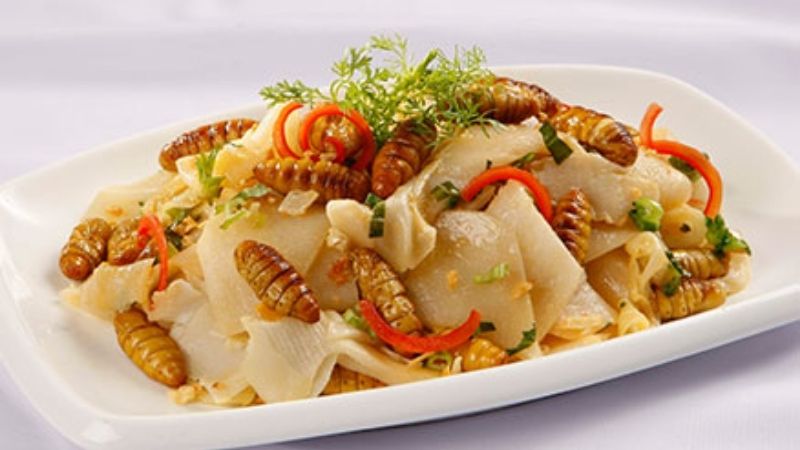Đuông Dừa
1. Introduction
In Bến Tre, the coconut capital of Vietnam, there is a rare and adventurous dish known as đuông dừa, or coconut larvae. Although it might seem unusual to outsiders, đuông dừa is considered a high-protein delicacy, deeply rooted in the culture and culinary identity of the Mekong Delta. For the locals, trying this dish is not only a test of bravery but also a way to connect with tradition.
2. What Is Đuông Dừa?
Đuông dừa are the larvae of the coconut weevil, a type of beetle that lays its eggs inside the soft trunk of coconut trees. When the larvae hatch, they feed on the coconut's inner tissue, becoming plump, creamy-white grubs about the size of a human thumb.
Because they damage coconut trees, harvesting đuông dừa is also a way to protect the crops—turning a pest into a specialty.
3. Common Ways to Prepare
There are several ways to enjoy đuông dừa, depending on your taste and bravery:
-
Raw with fish sauce (đuông dừa chấm mắm): The most iconic and daring version. The live larvae are dipped directly into a bowl of spicy fish sauce and eaten whole, still wriggling. This is considered the most "authentic" way to try them.
-
Fried until crispy (đuông chiên giòn): The larvae are deep-fried until golden brown and crunchy. This version is more approachable for first-timers.
-
Grilled over charcoal: Grilling brings out a nutty aroma and makes the texture firmer.
-
Cooked in sticky rice or coconut milk: Some versions involve steaming the larvae with glutinous rice or coconut for a creamy, rich flavor.
4. Taste and Texture
Despite their appearance, đuông dừa are prized for their rich, buttery flavor and soft, fatty texture. Many say the taste is similar to egg yolk or cheese, with a hint of coconut due to the larvae's diet. When fried or grilled, they become slightly crispy on the outside while remaining creamy inside.
5. Cultural and Culinary Value
For the people of Bến Tre, đuông dừa is more than a strange snack—it is a symbol of local resourcefulness and culinary courage. The dish is often served at drinking parties or offered to curious tourists looking for an unforgettable food experience.
Although not an everyday food due to its rarity and the potential harm to coconut trees, đuông dừa remains one of the most talked-about and photographed specialties of the region.


